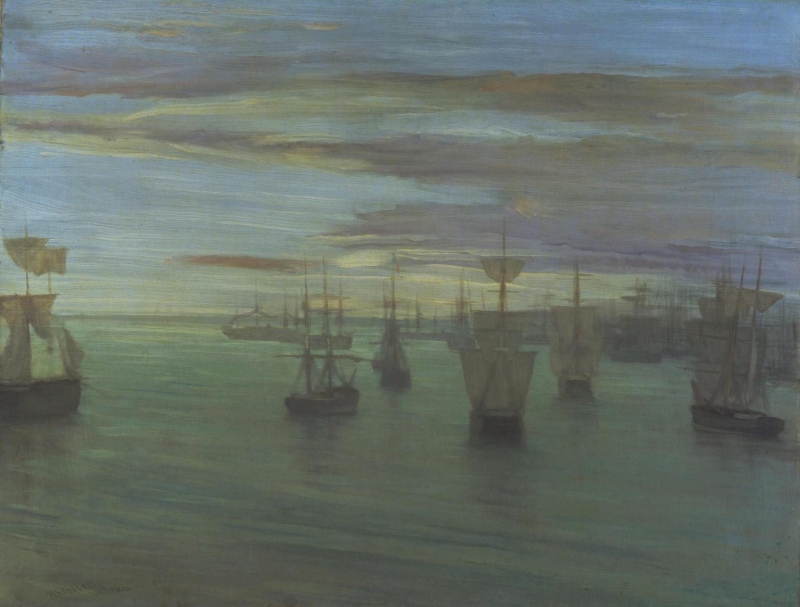Crepuscule in Flesh Colour and Green: Valparaiso was signed and dated in 1866. 1 According to Whistler's diary for the voyage he undertook to South America, he left Southampton on 2 February 1866 and arrived in Valparaiso on 12 March, where he remained, except for occasional visits to Santiago and the surrounding countryside, until sailing for England early in September. 2
According to Whistler, 'I made good use of the time, I painted the three Valparaiso pictures that are known and two others that have disappeared'. 3 Crepuscule in Flesh Colour and Green: Valparaiso was one of the three 'known' Valparaiso pictures. The other two are Symphony in Grey and Green: The Ocean [YMSM 072] and Nocturne in Blue and Gold: Valparaiso Bay [YMSM 076].
The Tate dates this painting to 30 March 1866:
'Responding to the Spanish occupation of the Peruvian-owned Chincha Islands in 1864, the South American countries of Chile, Bolivia and Ecuador formed an alliance with Peru against Spain. In February 1866 Whistler left London for South America, in order to assist the Chilean cause. When he arrived in Chile on 12 March a squadron of six Spanish ships was blockading the country's main harbour, Valparaiso. In order to protect their own nationals and act as a neutral, peacekeeping force, the British, American and French governments had sent out their own fleets, who were also present. On 27 March the Spanish announced their intention to bombard the city. Although outraged by this act of aggression, the British, American and French fleets had no option but to withdraw. Whistler's picture almost certainly records the beginning of their withdrawal, on the evening of 30 March. The following day the Spanish bombarded the city, by which time Whistler had fled to the hills on horseback.' 4
Whistler's own account, given to the Pennells in 1900, was vivid and probably truthful, as far as his memory served, in remembering events several decades earlier:
'After that, came the bombardment. There was the beautiful bay with its curving shores, the town of Valparaiso on one side, on the other the long line of hills. And there, just at the entrance of the bay, was the Spanish fleet, and, in between, the English fleet and the French fleet and the American fleet and the Russian fleet, and all the other fleets. And when the morning came, with great circles and sweeps, they sailed out into the open sea, until the Spanish fleet alone remained. It drew up right in front of the town, and bang went a shell, and the bombardment began. The Chileans didn't pretend to defend themselves. The people all got out of the way, and I and the officials rode to the opposite hills where we could look on. The Spaniards conducted the performance in the most gentlemanly fashion; they just set fire to a few of the houses, and once, with some sense of fun, sent a shell whizzing over toward our hills. And then, I knew what a panic was. I and the officials turned and rode as hard as we could, anyhow, anywhere. The riding was splendid and I, as a West Point man, was head of the procession. By noon the performance was over. The Spanish fleet sailed again into position, the other fleets sailed in, sailors landed to help put out the fires, and I and the officials rode back into Valparaiso.' 5
Last updated: 22nd May 2021 by Margaret






